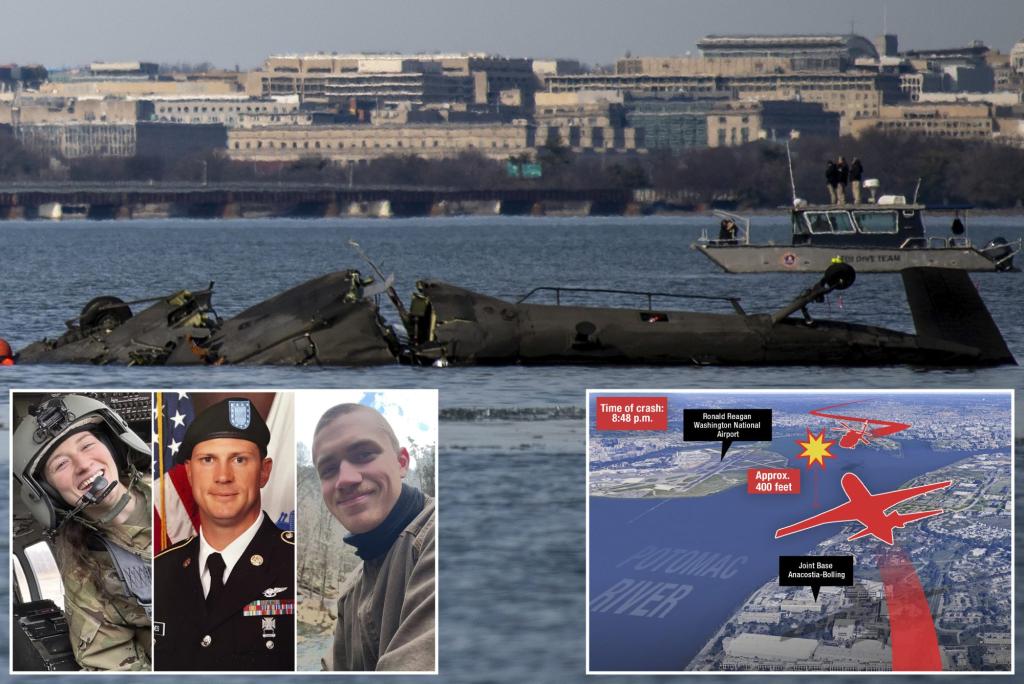Paragraph 1: The Mid-Air Collision and Initial Findings
On a fateful day last week, the skies over Washington, D.C. witnessed a tragic mid-air collision between a U.S. Army Black Hawk helicopter and an American Airlines jet in close proximity to Reagan National Airport. This catastrophic event, resulting in the loss of 67 lives, marks the deadliest commercial aviation accident in the United States in over two decades. Preliminary investigations conducted by the National Transportation Safety Board (NTSB) have revealed a critical factor contributing to the collision: the Black Hawk helicopter was operating at an altitude exceeding the permissible limit for the airspace. Air traffic control radar data indicates that the helicopter was recorded at an altitude of 300 feet on the air traffic control display at the moment of impact.
Paragraph 2: Airspace Regulations and Altitude Discrepancy
The airspace surrounding Reagan National Airport, which also serves as a flight path for jets arriving and departing the airport, has stringent altitude restrictions for helicopters. The maximum permitted altitude for helicopters in this designated area is 200 feet. The NTSB’s preliminary findings, based on radar data rounded to the nearest 100 feet, suggest that the Black Hawk helicopter was flying between 251 and 349 feet, a clear violation of the prescribed altitude limit. This discrepancy raises serious questions about the factors that led to the helicopter’s excessive altitude and the potential role it played in the collision.
Paragraph 3: Wreckage Recovery and Ongoing Investigation
In the aftermath of the crash, a collaborative effort involving various agencies, including the Naval Sea Systems Command Supervisor of Salvage and Diving, was launched to recover the wreckage of the ill-fated aircraft. To date, significant portions of the aircraft have been retrieved from the frigid waters of the Potomac River, including the ring wing, central fuselage sections, parts of the left wing and fuselage, and substantial components of the forward cabin and cockpit. These recovered pieces of the puzzle will be crucial in piecing together the sequence of events leading to the collision. The wreckage will be transported to a secure location for a thorough and meticulous examination by NTSB investigators.
Paragraph 4: Black Hawk Retrieval and Altitude Confirmation
The recovery of the Black Hawk helicopter, anticipated later this week, represents a pivotal step in the investigation. The NTSB has emphasized that it cannot definitively confirm the exact altitude of the helicopter or provide detailed insights into its flight parameters until the aircraft is fully retrieved and subjected to a comprehensive examination. The helicopter’s flight data recorder and other onboard systems will be meticulously analyzed to reconstruct the helicopter’s flight path, speed, and altitude in the moments leading up to the collision. This information will be critical in determining the precise extent to which the helicopter’s altitude deviation contributed to the accident.
Paragraph 5: Investigative Process and Comprehensive Analysis
The NTSB investigation will be a comprehensive and multifaceted process, encompassing a wide range of factors. Investigators will not only focus on the altitude discrepancy but will also delve into other critical areas, including air traffic control communications, weather conditions, pilot training and experience, maintenance records of both aircraft, and any potential mechanical malfunctions. The objective is to gain a holistic understanding of the circumstances that culminated in this tragic event. The investigation will utilize various data sources, including radar data, voice recordings from air traffic control, eyewitness accounts, and the physical evidence recovered from the wreckage.
Paragraph 6: Seeking Answers and Preventing Future Tragedies
The NTSB’s ultimate goal is not only to determine the cause of this devastating crash but also to derive critical lessons learned that can be applied to enhance aviation safety and prevent similar tragedies from occurring in the future. The investigation will undoubtedly be a complex and time-consuming endeavor, but its findings will be instrumental in informing policy recommendations, improving safety protocols, and fostering a safer airspace for all. As the investigation unfolds, the nation mourns the lives lost and awaits the answers that will hopefully emerge from this painstaking process.

